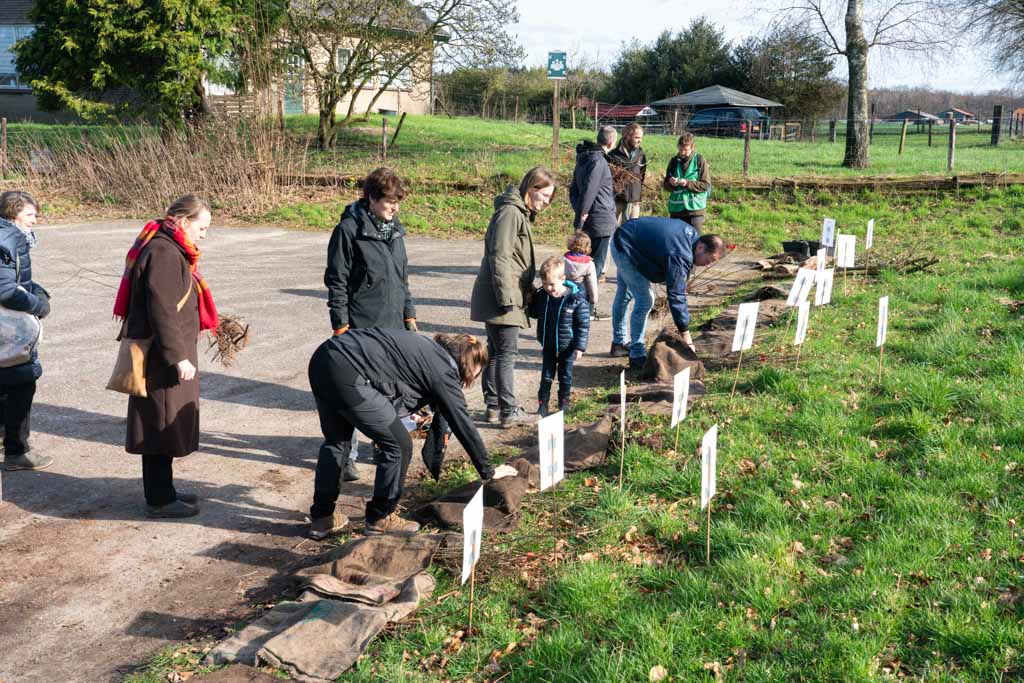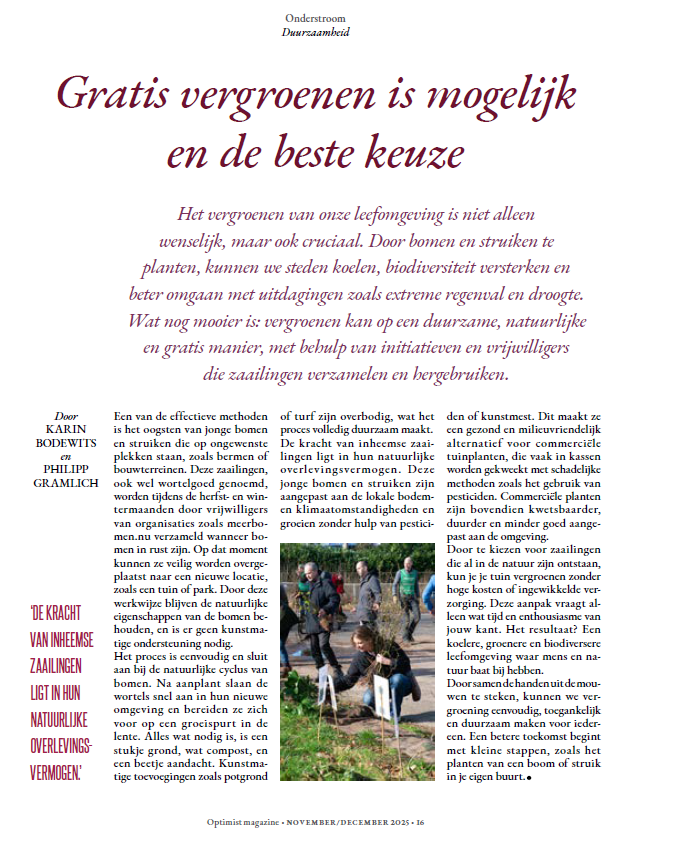Free greening is possible and the best choice

Karin Bodewits and Philipp Gramlich
This article was published in The Optimist, 18th of October 2025.
Greening our living environment is not only desirable, but also crucial. By planting trees and shrubs, we can cool cities, enhance biodiversity, and better cope with challenges like extreme rainfall and drought. Even better, greening can be achieved sustainably, naturally, and free of charge, with the help of initiatives and volunteers who collect and reuse seedlings.
One effective method is harvesting young trees and shrubs growing in undesirable locations, such as roadsides or construction sites. These seedlings, also called rootstock, are collected when trees are dormant during the autumn and winter months by volunteers from organizations like meerbomen.nu. At that point, they can be safely transplanted to a new location, such as a garden or park. This method preserves the trees' natural characteristics, and no artificial support is required.
The process is simple and aligns with the natural life cycle of trees. After planting, the roots quickly take to their new environment and prepare for a growth spurt in spring. All it takes is a small plot of soil, some compost, and a little attention. Artificial additives like potting soil or peat are unnecessary, making the process completely sustainable.
The strength of native seedlings lies in their natural survival. These young trees and shrubs are adapted to local soil and climate conditions and grow without the aid of pesticides or fertilizers. This makes them a healthy and environmentally friendly alternative to commercial garden plants, which are often grown in greenhouses using harmful methods such as pesticides. Commercial plants are also more fragile, more expensive, and less well-adapted to their environment.
By choosing seedlings that have already emerged in nature, you can green your garden without high costs or complicated maintenance. This approach only requires a little time and enthusiasm on your part. The result? A cooler, greener, and more biodiverse habitat that benefits both people and nature.
By working together, we can make greening simple, accessible, and sustainable for everyone. A better future starts with small steps, like planting a tree or shrub in your own neighborhood.
